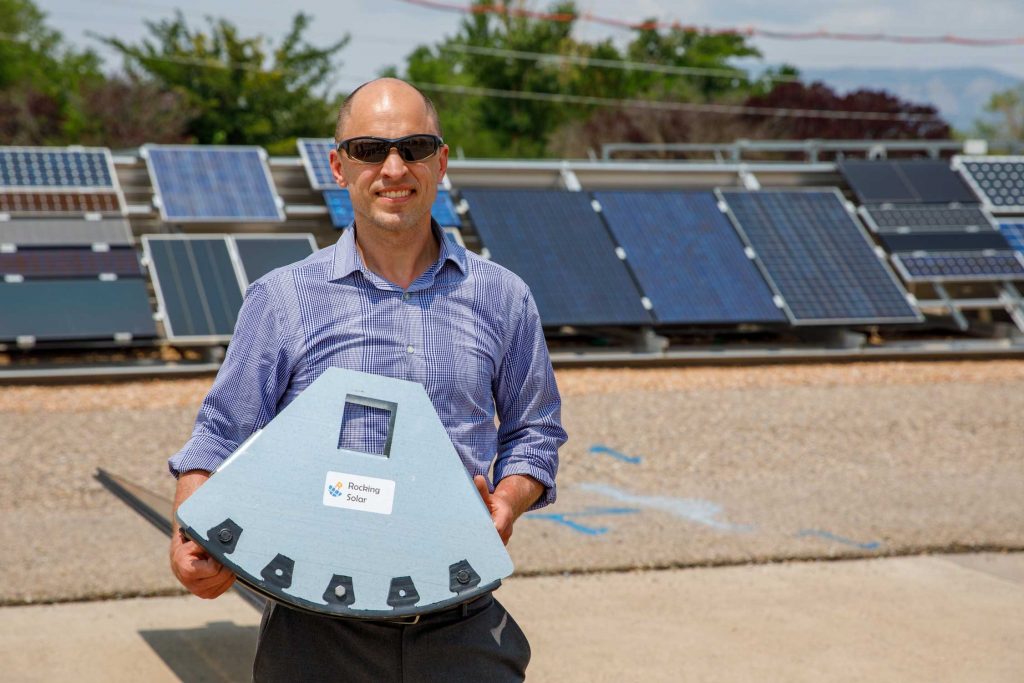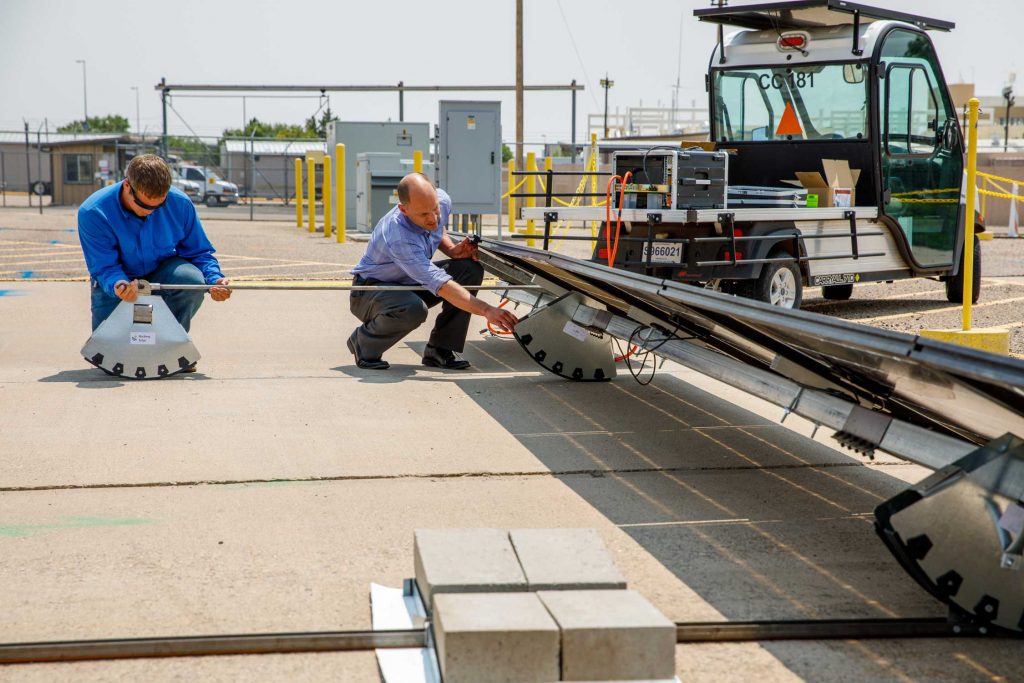Rocking Solar aims to solarize commercial rooftops across the US

Sandia researchers recently hosted Rocking Solar CEO Darin Palmer to understand his company’s approach for populating commercial rooftops with solar as part of the American-Made Solar Prize competition. The two-day visit offered Sandia solar scientists and structural engineers a close look at the new system and chance to share their capabilities and expertise with an American-Made Solar Prize participant.
“Sandia continues to support innovation in the U.S. sector in lockstep with the Solar Energy Technologies Office’s goal of driving down the costs of solar-generated electricity through improvements in efficiency and reliability,” said researcher Laurie Burnham. “To that end, we are working with companies through the American-Made Solar Prize to support innovative concepts and experimental designs that have the potential to reduce costs and open new markets in the U.S. solar sector.”
The American-Made Solar Prize competition is funded by the DOE Solar Energy Technologies Office and is designed to boost U.S. solar manufacturing through a series of contests and by developing a diverse and powerful support network, including national laboratories, energy incubators and other resources across the country.
“The American-Made Solar Prize has given us a significant jumpstart in our development and commercialization efforts,” Palmer said. “Sandia testing was critical to ensure Rocking Solar design meets commercial rooftop requirements of wind uplift, dynamic wind pressures, snow load, seismic and electrical grounding. Thanks to Sandia and others, we are confident we can deliver a best-in-class solution.”
Solar panels that rotate on single-axis trackers follow the sun as its vertical position in the sky changes relative to a fixed surface. They typically increase solar generation from 25% to 35% but at a higher cost than fixed-tilt solar arrays. Unlike fixed-tilt solar arrays, which don’t rotate, trackers require control systems and a heavy-duty support structure that enables solar panels to rotate along an axis, even under heavy wind loads.
According to Palmer, Rocking Solar’s design outcompetes traditional single-axis trackers on commercial rooftops, where weight, flexibility, and cost are priority. The Rocking Solar approach eliminates the need for heavy-duty motors and relies instead on the momentum of a rocker controlled by a simple actuator. The result is a high-efficiency tracker that weighs less, costs less and is lower risk, which results inless potential for roof damage. If it passes rigorous engineering tests, Palmer hopes to implement the design on thousands of acres of warehouse and other commercial rooftops, bringing electricity generation close to demand.

“Sandia was not there just to test our system but to discuss improvements and considerations for our design. From the technical staff to managers, they were all engaged in making it a great experience for Rocking Solar,” Palmer said.
Like other single-axis tracker designs, Rocking Solar generates up to 30% more energy per panel, relative to fixed-tilt arrays. This offers techno-economic benefits to commercial rooftops, many of which are reflective and ideal for bifacial solar systems that increase yield. With a higher yield, commercial customers would need 30% fewer panels to meet energy output, and they could save up to 22% for the same amount of energy. Additionally, the Rocking Solar design requires less ballast and fewer penetrations relative to traditional tracker systems, translating into less risk and lower installation costs for site owners.
“Sandia’s support for Rocking Solar is a great example of cross-lab collaboration, involving the PSEL team, as well as Sandia structural engineers,” Laurie said.
“The American-Made Solar Prize opens up Sandia’s capabilities and expertise to help American industry,” said Tony Martino, Photovoltaics & Material Technologies manager. “At the same time, we learn the newest technologies coming to market, and we meet the people. It is a great way to stay engaged in the community and develop partnerships that can last for years.”
Next, Rocking Solar hopes to conduct a demonstration project at the Nevada Regional Test Center, with technical support from Sandia and University of Nevada, Last Vegas. The location of the site, just south of Las Vegas, was chosen partially to draw attention from nearby casinos and other owners of commercial rooftops in a top-10 state for cumulative solar capacity.
The American-Made Solar Prize is directed and administered by the National Renewable Energy Laboratory and funded by the DOE Solar Energy Technologies Office.